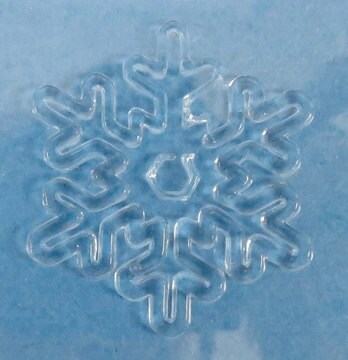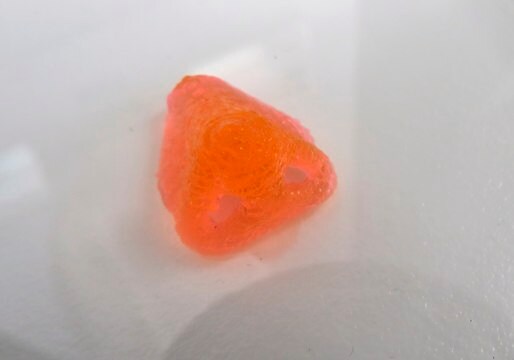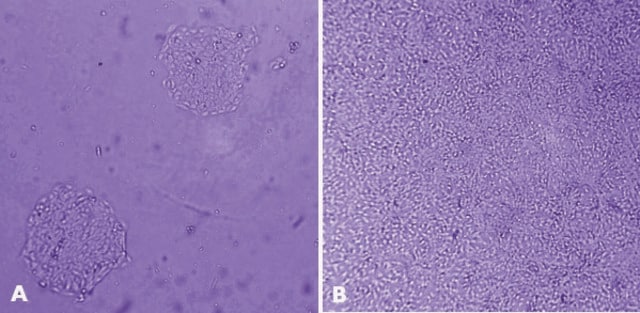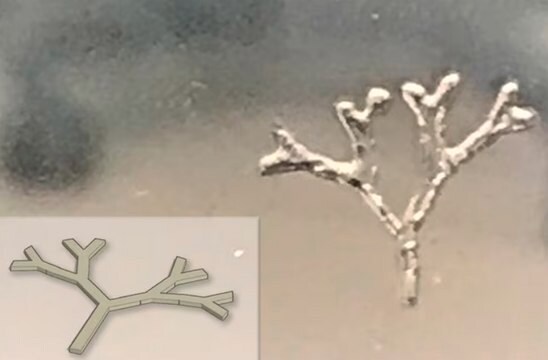934178
TissueFab® bioink
(GelHAHep)MA Vis/405 nm, low endotoxin
Synonim(y):
Bioink, Bioprinting 3D, GelMA, HAMA, Heparyna, Hialuronian, Hydrożel, Kontrolowane uwalnianie, Kwas hialuronowy, Metakrylan heparyny, Metakrylan kwasu hialuronowego, Żelatyna, Żelatyna metakryloilowa
About This Item
Polecane produkty
Poziom jakości
sterylność
0.2 μm filtered
Formularz
gel form
zawiera
<50 EU/mL Endotoxin
skład
Gelatin, Hyaluronic acid, Heparin, Alginate
zanieczyszczenia
<5 CFU/g Bioburden ( fungal)
<5 CFU/g Bioburden (Total Aerobic)
kolor
pale yellow to colorless
pH
6.5-7.5
kompatybilność
3D bioprinting, extrusion bioprinting
temp. przechowywania
2-8°C
Szukasz podobnych produktów? Odwiedź Przewodnik dotyczący porównywania produktów
Opis ogólny
Zastosowanie
- odkrywanie leków
- modele chorób in vitro
- medycyna regeneracyjna - mięso hodowane z komórek
Cechy i korzyści
- Modele do biodruku odwzorowują biologię na potrzeby odkrywania leków i zastosowań in vivo
- Sterylne, o niskiej zawartości endotoksyny - kontrola partii zapewnia powtarzalne modele do przedklinicznych testów toksykologicznych i badań przesiewowych leków
- Wydłużony okres trwałości i stabilność
Inne uwagi
Metakrylanowa funkcjonalizacja heparyny umożliwia sieciowanie termiczne lub fotochemiczne poprzez kowalencyjne sprzężenie. Heparyny wykazują wysoką gęstość ładunku anionowego, co sprzyja dużym współczynnikom pęcznienia w wodzie. Biotusze na bazie heparyny są wykorzystywane w inżynierii tkankowej, biodruku 3D i aplikacjach związanych z dostarczaniem leków.
Metakryloil żelatyny (GelMA) jest polimeryzowalnym materiałem hydrożelowym pochodzącym z naturalnych składników macierzy pozakomórkowej (ECM). Ze względu na niski koszt, obfitość i zachowanie naturalnych motywów wiążących komórki, żelatyna stała się bardzo poszukiwanym materiałem do zastosowań w inżynierii tkankowej. Dodanie fotosieciowalnych grup funkcyjnych metakrylamidu w GelMA pozwala na syntezę biokompatybilnych, biodegradowalnych i nieimmunogennych hydrożeli, które są stabilne w biologicznie istotnych warunkach i promują adhezję, rozprzestrzenianie się i proliferację komórek.
Kwas hialuronowy (HA) jest liniowym polisacharydem naprzemiennego kwasu D-glukuronowego/N-acetylo-D-glukozaminy występującym głównie w tkankach łącznych. Hydrożele na bazie kwasu hialuronowego są powszechnie stosowane w inżynierii tkankowej, biodruku 3D i dostarczaniu leków. Kwas hialuronowy funkcjonalizowany metakrylanem (MA) jest fotosieciowalny.
Niska zawartość endotoksyn, niskie obciążenie biologiczne: Endotoksyny mogą negatywnie wpływać na wzrost komórek, morfologię, różnicowanie, stan zapalny i ekspresję białek. Obciążenie biologiczne to liczba skażonych organizmów znalezionych w danej ilości materiału.
Testujemy każdą partię pod kątem endotoksyn oprócz całkowitego obciążenia biologicznego (tlenowego i grzybiczego), aby zminimalizować niepożądane interakcje. Więcej informacji: Cell Culture FAQs: Zanieczyszczenie endotoksynami bakteryjnymi
Informacje prawne
Kod klasy składowania
12 - Non Combustible Liquids
Klasa zagrożenia wodnego (WGK)
WGK 3
Temperatura zapłonu (°F)
Not applicable
Temperatura zapłonu (°C)
Not applicable
Wybierz jedną z najnowszych wersji:
Certyfikaty analizy (CoA)
It looks like we've run into a problem, but you can still download Certificates of Analysis from our Dokumenty section.
Proszę o kontakt, jeśli potrzebna jest pomoc Obsługa Klienta
Masz już ten produkt?
Dokumenty związane z niedawno zakupionymi produktami zostały zamieszczone w Bibliotece dokumentów.
Nasz zespół naukowców ma doświadczenie we wszystkich obszarach badań, w tym w naukach przyrodniczych, materiałoznawstwie, syntezie chemicznej, chromatografii, analityce i wielu innych dziedzinach.
Skontaktuj się z zespołem ds. pomocy technicznej








